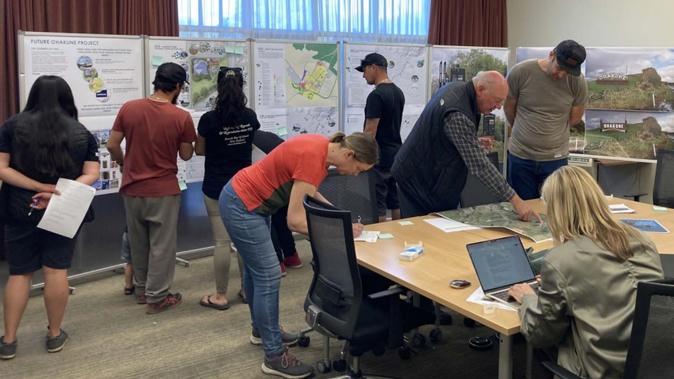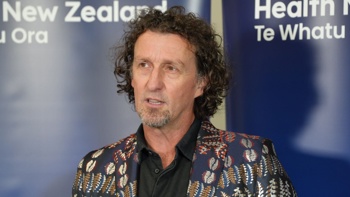
A community leader in Ohakune says the visitor hub needs funding now to help offset the crisis facing the Ruapehu district’s tourism industry.
Future of Ohakune Project governance group chairwoman Christine Hickman is lobbying Ruapehu District councillors and community board members to bring forward $2 million of ratepayer funding for its town revitalisation project.
She said the closure on Sunday of the iconic Chateau Tongariro Hotel had exacerbated anxiety already being felt in the community, as questions remain over the future of Ruapehu Alpine Lifts (RAL).
RAL operates the Whakapapa and Tūroa ski fields in the central North Island, employing about 200 staff across the business during the season. Hit by Covid-19 lockdowns and a poor ski season, the company is $40m in debt and has placed itself in voluntary administration.
“Our tourism industry is on thin ice,” Hickman told a meeting of the Waimarino-Waiouru Community Board.
“Tourism employs one in three people directly or indirectly in our community. As the region’s tourist hub, we are facing somewhat of a crisis. This [town revitalisation project] is very relevant to this conversation.”
A fund of $2.4m was set aside in the council’s Long Term Plan for town revitalisation, including new streetscaping and signage. Most of the fund is budgeted to be spent in 2025/26.
The Grand Chateau Tongariro is not taking any new bookings for 2023 and 2024.
“If you were to ask the community, they would say the time to revitalise our town is now, not in three years’ time,” Hickman said.
- Tourism Minister has hopes of a long-term future for Ruapehu Alpine Lifts
- Ruapehu District Mayor: Don Cameron on the importance of domestic tourism
- Chateau Tongariro Hotel forced to close in five days
- Grand Chateau Tongariro to close permanently on February 5
“I can’t stress enough that there is a huge degree of concern in our community. There has been a huge amount of hard work done. We’re at the stage of execution; there’s a lot of momentum behind it. We’re on the precipice.
“To think that a lot of the work that’s going to make an impact is not going to be done for the next two or three years is of great concern.”
Hickman asked the community board to support bringing the remaining $2m forward by lobbying councillors and the Ōwhango-National Park and Taumarunui-Ōhura community boards.
“We all understand that money is scarce in all parts of our community. For us, it’s about prioritisation,” Hickman said.
A key focus of the project is developing the town centre’s Christie Park into a ‘village green’ with multi-use community spaces, new play equipment, planting, stream enhancement and seating areas.
It also aims to revitalise the Junction at the other end of the town as a heritage and railway precinct with a multi-use public space and open areas to support performance, events and tourism development.
The Junction refresh aims to boost amenities and services that support tourism, including the Mountains to Sea trail, the Old Coach Road cycling trail and other developing cycleways, and the passenger train arrival experience.
Transport options between the Junction and Ohakune town centre will also be developed.
In 2020, the council funded consultants Boffa Miskell to work with the community on developing a strategic revitalisation plan for Ohakune. A reference group made up of representatives from the community, Ngāti Rangi, businesses, farming and market gardeners was developed to establish initial ideas and propose potential objectives, initiatives and projects.
The report to the Waimarino-Waiouru Community Board details the outcome from community engagement in October last year on those initial ideas.
It says: “There is an economic cost to town revitalisation, as it is being funded through rates, but providing a positive, vibrant town will have economic benefits from increasing visitors and residents.
“The local economy relies heavily on visitors, and providing the right mix of attractions, walks, rides, places to eat and areas for both children and adults will provide income and economic benefits for locals.”
The Waimarino-Waiouru Community Board received the report, agreed to new signage and endorsed the streetscape project.
Ruapehu District Deputy Mayor Viv Hoeta said bringing the $2m funding forward could be a way of supporting the district through a difficult time.
Ruapehu District Council chief executive Clive Manley said any request to bring funds forward would increase council debt. He advised the project governance group to make its case to the council through the Annual Plan process.
Public Interest Journalism funded through NZ On Air.
Take your Radio, Podcasts and Music with you

/cloudfront-ap-southeast-2.images.arcpublishing.com/nzme/3TQIODE46FBXJIKJRREGRNA74U.JPG)








